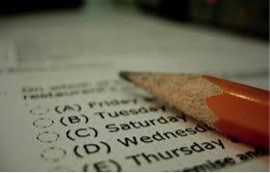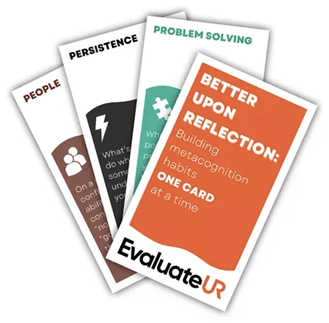by Dana Melone, Cedar Rapids Kennedy High School
Welcome to the start of a semester for most teachers. My name is Dana Melone and I teach AP Psychology and AP Research at Cedar Rapids Kennedy High School. Most educators will give some sort of multiple-choice test during the semester, and as educators we want our students to use their exams as a learning tool, not just as a summative experience. Unfortunately, many students just pop a graded exam into their folder and move on. Today I would like to give you some strategies you can use as a teacher to get students to learn from their mistakes as well as their correct answers.

These strategies also give teachers the opportunity to look at their own teaching and find commonalities in the mistakes their students are making. If your students are all making similar mistakes you can reteach this topic in a new way. If mistakes are spread out it may inform you that your students need to work on study skills. Your students can use these examples to examine their own thinking and learning (become more metacognitive) and become advocates for themselves. You and your students utilize metacognitive processes to become better teachers and learners.
Let’s start with the exam itself. Students often get their exam back and struggle to remember what their thinking was when they took it. If you are giving a paper exam, students can use a coded system as they take their test to remember their thinking later. For example, if a student feels they knew the answer to the question and they feel confident in their choice then they can put a checkmark next to that question. If they were able to narrow it down but were not entirely sure they made the right choice they can put a dash next to the question. If they had no idea than they can use an x. This allows students to remember their thinking as they look back at their exam. Students can find out if they are always missing similar style or topic questions that they thought they already knew. They can use these self-coded exams as they get close to finals as a study tool. Students can also take note whether or not their thinking was correct. If they are the ones about which they felt confident wrong, they need to explore that further. Student-coded exams also allow teachers to look at patterns for their own use and modify their teaching appropriately, i.e. be metacognitive in their teaching. For example, teachers can change their focus if a large number of students indicated that they did not know similar concepts or struggled with application questions. Or, if students indicate that they narrowed down to the best two choices but chose poorly, teachers can share strategies to deal with that issue. Why do this? The hope is that students will become more aware of what is working and what isn’t and that by making them more aware, they will make adjustments. By regularly practicing these metacognitive skills, we hope that students will learn to adjust on their own.
Once students get their exam back a next step for many teachers is to have students complete exam corrections. I have seen many formats of exam corrections. The methods that really get students thinking about the content and their own testing strategy produce metacognitive awareness. Here are some methods that you could use individually or combine:
- Have students write why they think they got the question wrong. Was it an error in reading the question? Did they not know the content? Did they narrow it down to two but chose incorrectly?
- Have students explain why the answer they chose is incorrect or why the correct answer is correct.
- Have students rewrite the question to make their wrong answer right.
- Have students write a memory aid to help them remember that concept in the future.
- Have students write out what they found tricky about that concept.
- Have students write out how that concept relates to them or another concept in the course.
- Have students categorize the concepts they missed by learning target or standard and draw a conclusion about that target or standard as a whole. Many classrooms are moving to standards-based learning or a select few overrising concepts students must master to be proficient in the course. If you can organize your exam to show students patterns they are making with these standards, it can help them make good study decisions and help you make good teaching decisions.
How can we as educators know if students have gotten the most out of this process? Try including questions on the most commonly missed topics on future exams at no cost to the students. Meaning, do not penalize their score. Make these questions formative to see if they are making progress. Do you have great ideas for test corrections that produce metacognition? Let us know.




